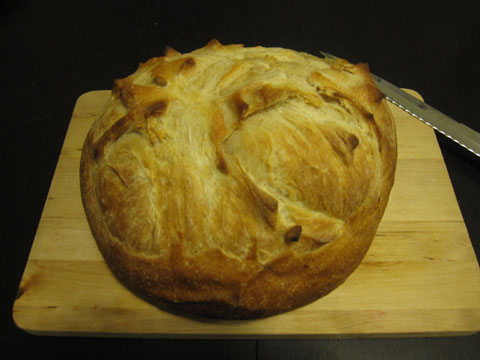
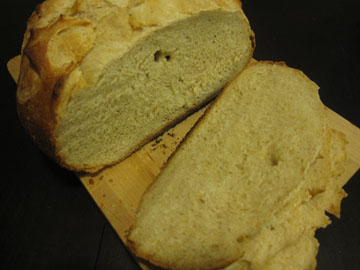
May 09 2010


Permanent link to this article: https://www.rhinoblues.com/thoughts/2010/05/pain-de-campagne/
Apr 19 2010
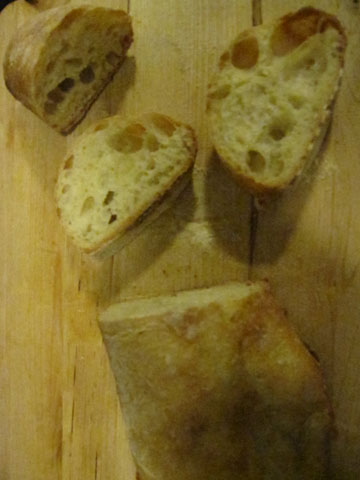
This is the style of bread I think of most often when I think about a good artisan bread in America. Pain à l’Ancíenne is a simple rustic dough that in this case benefits from a long slow fermentation. The dough is a wet dough (more like ciabatta than a traditional french baguette). It ferments at refrigerator temperature for anywhere from 12 – 18 hours preferably. It is best as a 2 day project, though I ended up making mine in one day, mixing the dough before work (at 4:30am) and doing the typical second day tasks after work (at 5:00pm). This was also to be the first hearth style bread I’d make since installing the unglazed quarry tiles in my oven. My plan was to use 2/3rds of the dough to make baguettes and the other 1/3 to make pizza dough.
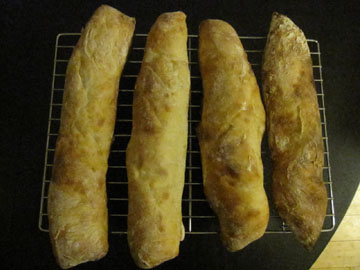
Permanent link to this article: https://www.rhinoblues.com/thoughts/2010/04/pain-a-lancienne/
Apr 09 2010
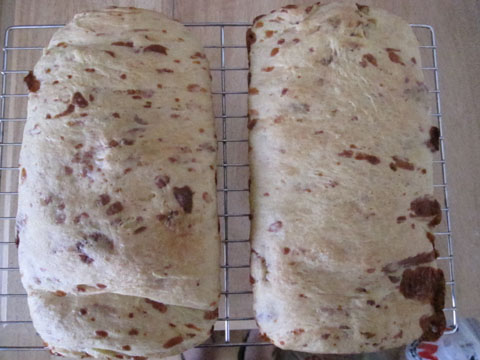
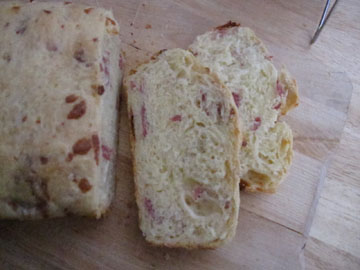
Permanent link to this article: https://www.rhinoblues.com/thoughts/2010/04/casatiello/
Apr 03 2010
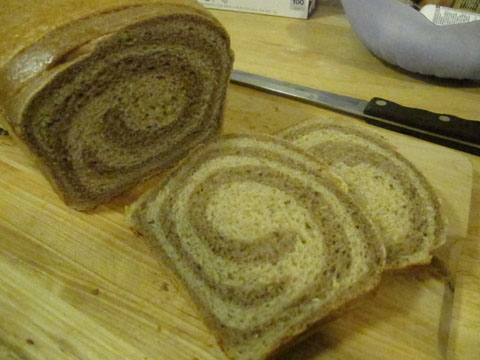
The tricky thing with a marbled loaf is you need to have both doughs having similar fermentation time. For this reason having everything mise en place is especially important for this loaf. Each of the doughs, are essentially identical, except the darker one has an added coloring agent. I used unsweetened chocolate dissolved in water as my coloring agent.
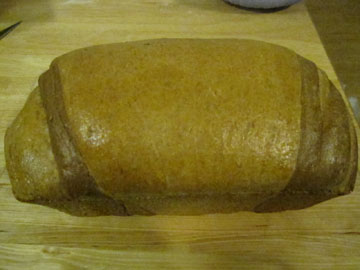
Permanent link to this article: https://www.rhinoblues.com/thoughts/2010/04/marbled-rye/
Apr 02 2010
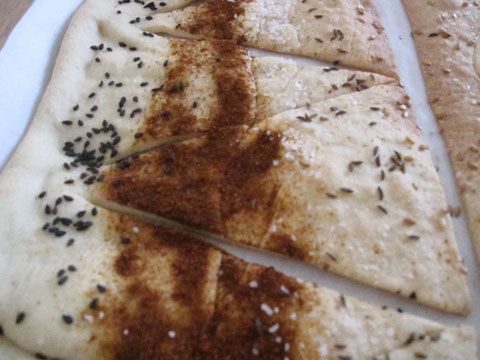
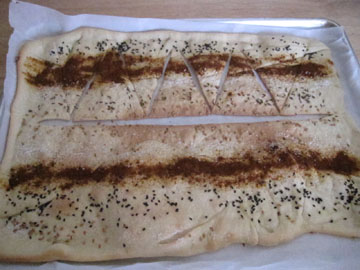
Permanent link to this article: https://www.rhinoblues.com/thoughts/2010/04/lavash-crackers/
Mar 26 2010
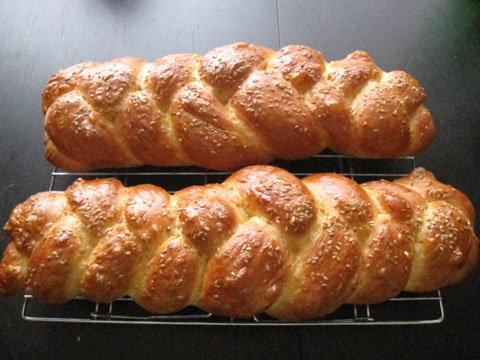
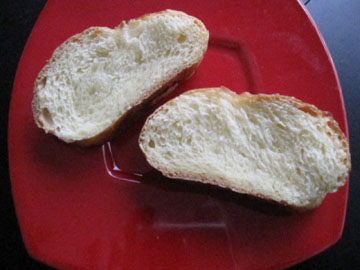
Permanent link to this article: https://www.rhinoblues.com/thoughts/2010/03/challah/
Mar 22 2010
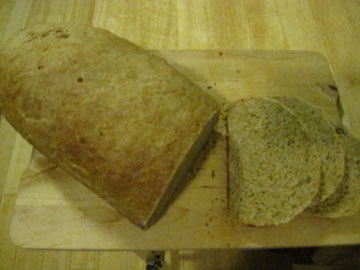
As part of my new found hobby of baking (and the BBA Challenge), I’m trying not to buy store bought bread. Since I had finally used up all the polenta (so couldn’t make the Anadama Bread), I decided to knock off another formula in the BBA Challenge.
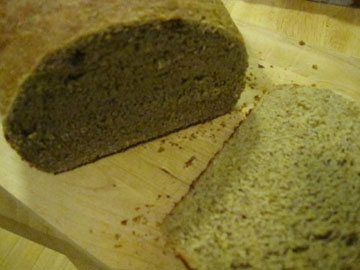
When planning to make the Light Wheat Bread, I decided to get a little adventurous however. I had a bunch of mesquite flour left over from the Mesquite Chocolate Chip cookies (due to a mistake by the mesquite flour company). I figured I’d replace the Whole Wheat flour in the formula with mesquite flour. Other than that, this formula is a pretty typical sandwich bread recipe. Its actually pretty similar to what my grandpa used to make in his bread machine. In addition to the usual suspects of flour, yeast, and water the bread has dry milk and honey (or sugar) to enrich the dough. The mesquite flour gave the bread a very distinct aroma and taste. I used a local sage honey as my sweetener which complemented the mesquite flour quite nicely. The bread definitely had an sweet earthy flavor thanks to the mesquite. It was also denser than I suspect the loaf would have been with whole wheat flour. I don’t think it took anything away from the bread though. It was a fun experiment.
Permanent link to this article: https://www.rhinoblues.com/thoughts/2010/03/light-wheat-bread/
Mar 17 2010
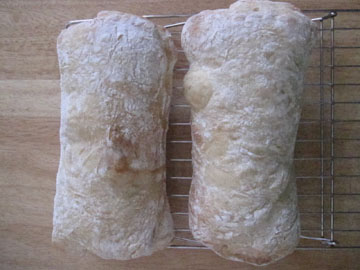
For the Ciabatta, I started with a poolish the night before. This would form the basis of the dough the next day. This is a fairly wet dough, so it can be a little sticky, but it was still pretty easy to work. I ended up making 3 loaves, though because I only have a round pizza stone, I ended up baking two loaves first, and the last loaf by itself. This actually worked out pretty well, as I accidentally degassed one loaf while shaping and the extra proofing time allowed it to get back up to a similar size as the other loaves.
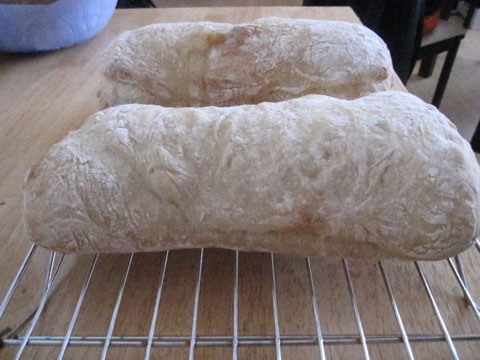
All in all, I was pretty pleased on how the loaves turned out. The crust had a nice golden touch to it, and the bread had good structure on the inside. My girlfriend and co-workers all really enjoyed it. It was a perfect compliment to the meal below:
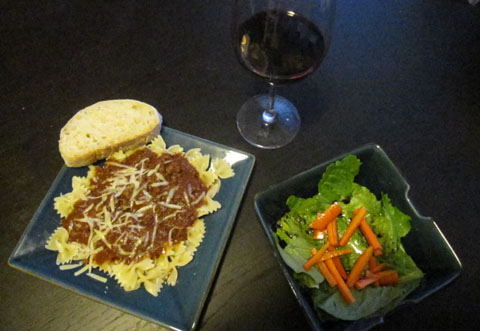
Permanent link to this article: https://www.rhinoblues.com/thoughts/2010/03/ciabatta/
Mar 06 2010
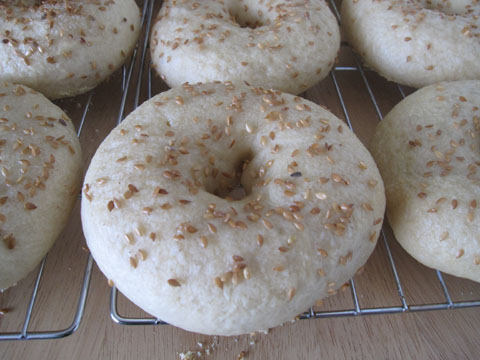
When I mentioned to folks at work that I was planning on making bagels a few weeks ago, I got a look like I was going to try to reinvent the wheel. Of course they all wanted to try them as well.
The “classic” bagel, made most famous by the Jewish bakers of NYC, is boiled for a short time before baking. The BBA bagel formula takes this style of bagel as its inspiration and adds a sponge to get the fermentation process going earlier. Like most of the formulas in the BBA, this is a 2 day process. Unlike the other 2 day breads I’ve made so far, you get to do most of the work on day 1 for the bagels.
The bagel dough is very stiff, so stiff that the formula recommends mixing and kneading by hand (so as not to endanger your stand mixer). That of course is a non-issue for me as I don’t have a stand mixer to use anyway. After mixing up the dough, you actually get to shape the bagels before putting them in the refrigerator overnight to retard.
On day 2 its time to boil and bake the bagels. I boiled 3 bagels at a time for a minute on each side. After I had boiled enough to fill a sheet pan, I placed them in the oven per the instructions. I think for my oven, I needed to bake them longer than I ended up doing. My bagels didn’t get that nice golden brown color on the top. They were fully baked through the inside however. I sampled my first bagel when it was still slightly warm and it was good. However, the texture and the flavor of these were much better after they had fully cooled.
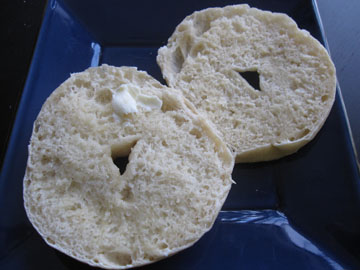
Permanent link to this article: https://www.rhinoblues.com/thoughts/2010/03/bagels/
Feb 10 2010
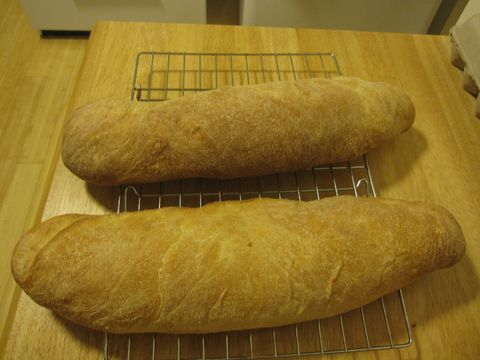
Diving back into the BBA Challenge, I started a biga on Monday night. This was the only one of the 3 pre-ferments in the BBA that I had not used yet. As this is an Italian style pre-ferment, I chose to make the Italian Bread.
Italian Bread is similar to a French Bread, but with a few extra ingredients. This dough is enriched with oil, sugar, and dry malt extract (which I happened to have due to my trip to the home brew supply store for beer ingredients last weekend).
As always, I kneaded by hand. I’m really starting to want to take a class on breadmaking. I feel like I’m always adding a bunch of extra flour to my dough to get to a tacky but not sticky dough. I also don’t think I’m always passing the “window pane” test. I do get a little window pane…but it also tears pretty easily as well. The dough was within the right temperature range when I left it to ferment. The other reason I’d like to take a class, is to work on my shaping. One of these loaves ended up pretty close to what it was supposed to look like, but the other i didn’t quite get my edge sealed so I had a little edge on one side of the loaf.
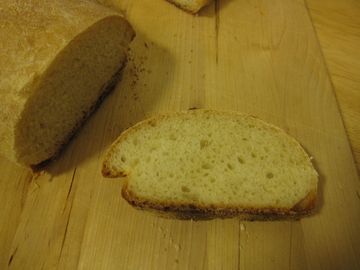
Permanent link to this article: https://www.rhinoblues.com/thoughts/2010/02/italian-bread/